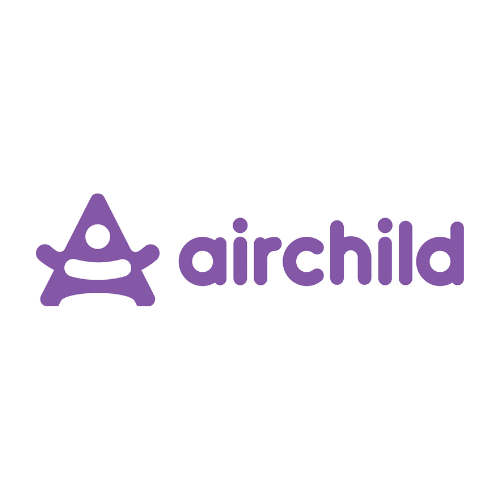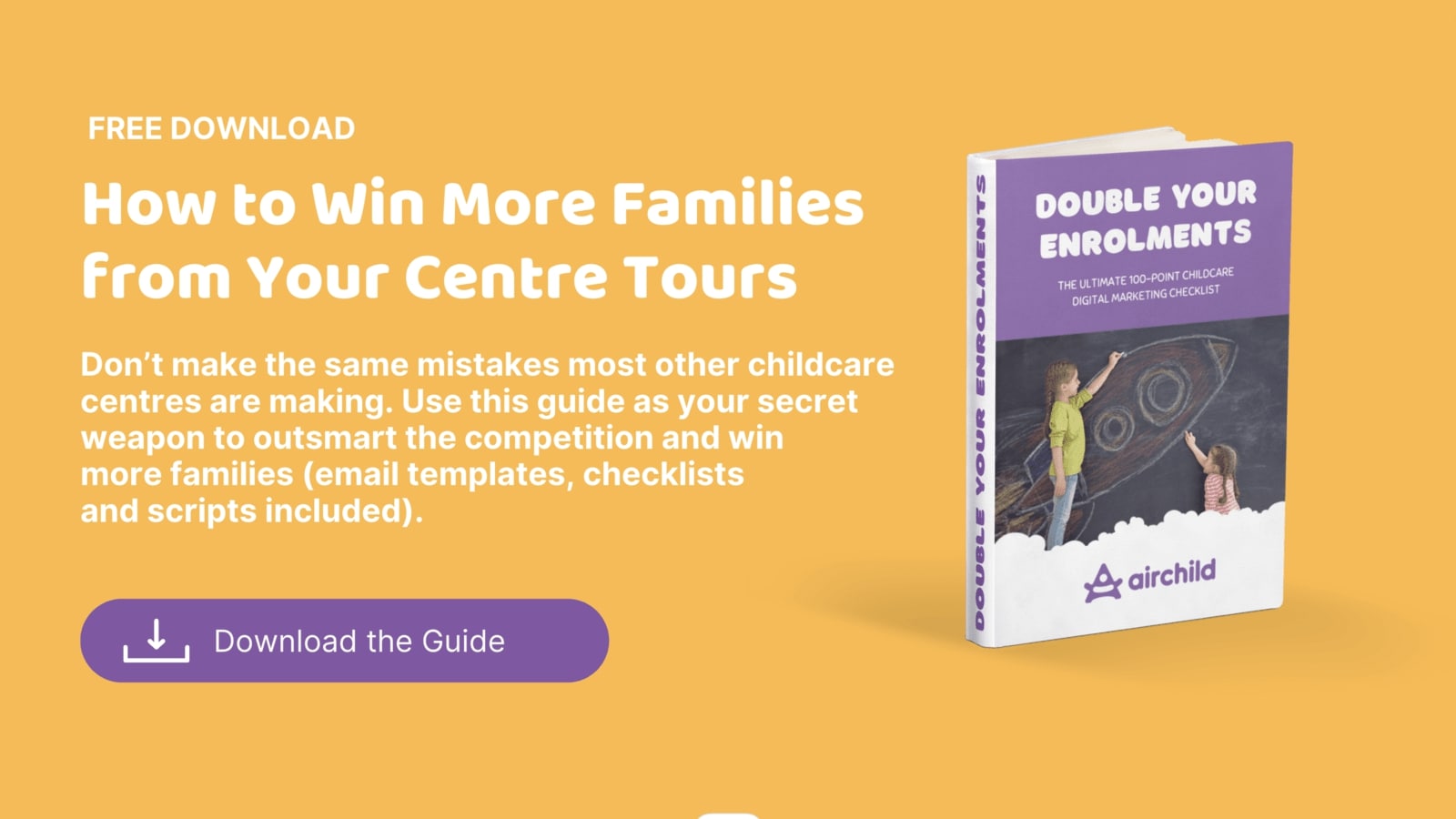How to Create an Effective Email Marketing Strategy for Your Childcare Business
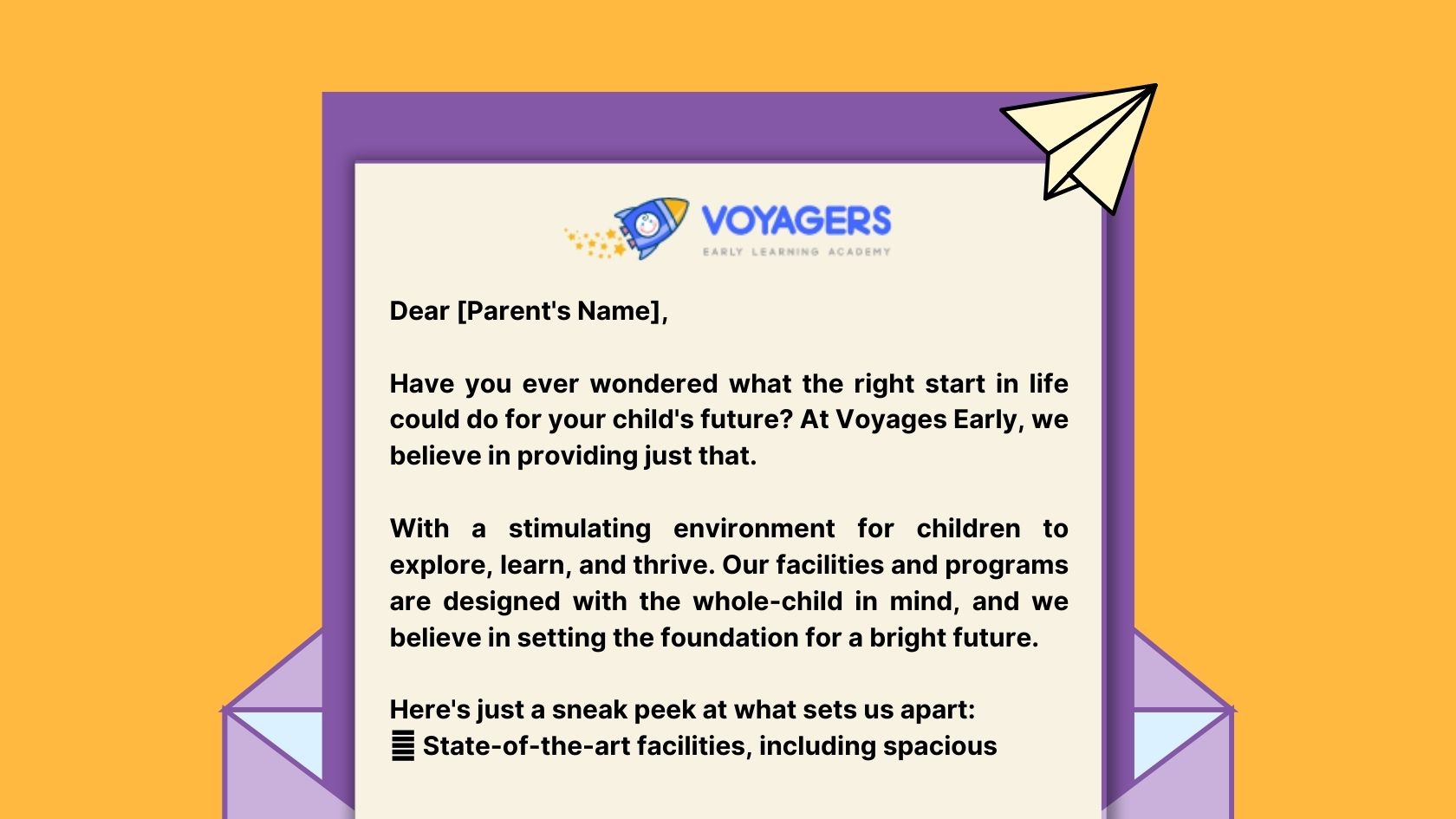

The Basics of Email Marketing

Why should visitors give you their email address? What’s in it for them?
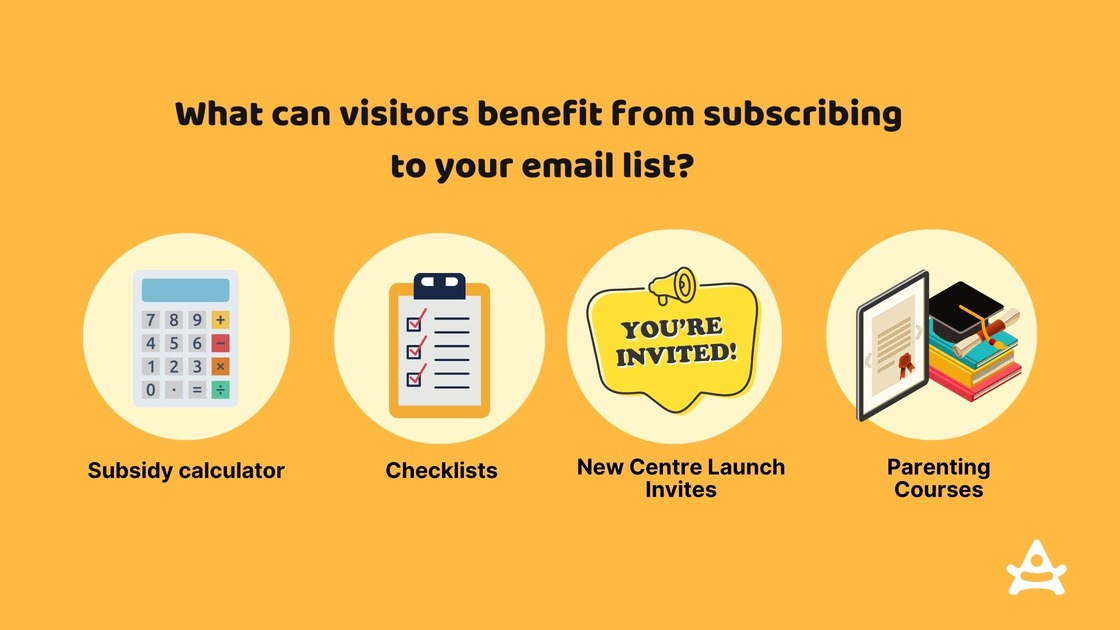
- Subsidy calculator – See how much you can save on your childcare with our new subsidy calculator! Collect a name and email before providing the results.
- Checklists:
- How to select the best care for your child
- Ready for school checklist
- Parent Tour Handbook
- New Centre launch – Get an exclusive invite to our centre launch grand opening and stay up to date with the progress of our new centre
- Courses and Training – Consider investing in creating or licensing the use of educational courses for parents that they can sign up for. E.g. Guide to babies 0-12 months (Airchild comes with a built-in Membership and course builder)
Why Email Marketing is a Successful Strategy for Nurturing Parent Relationships
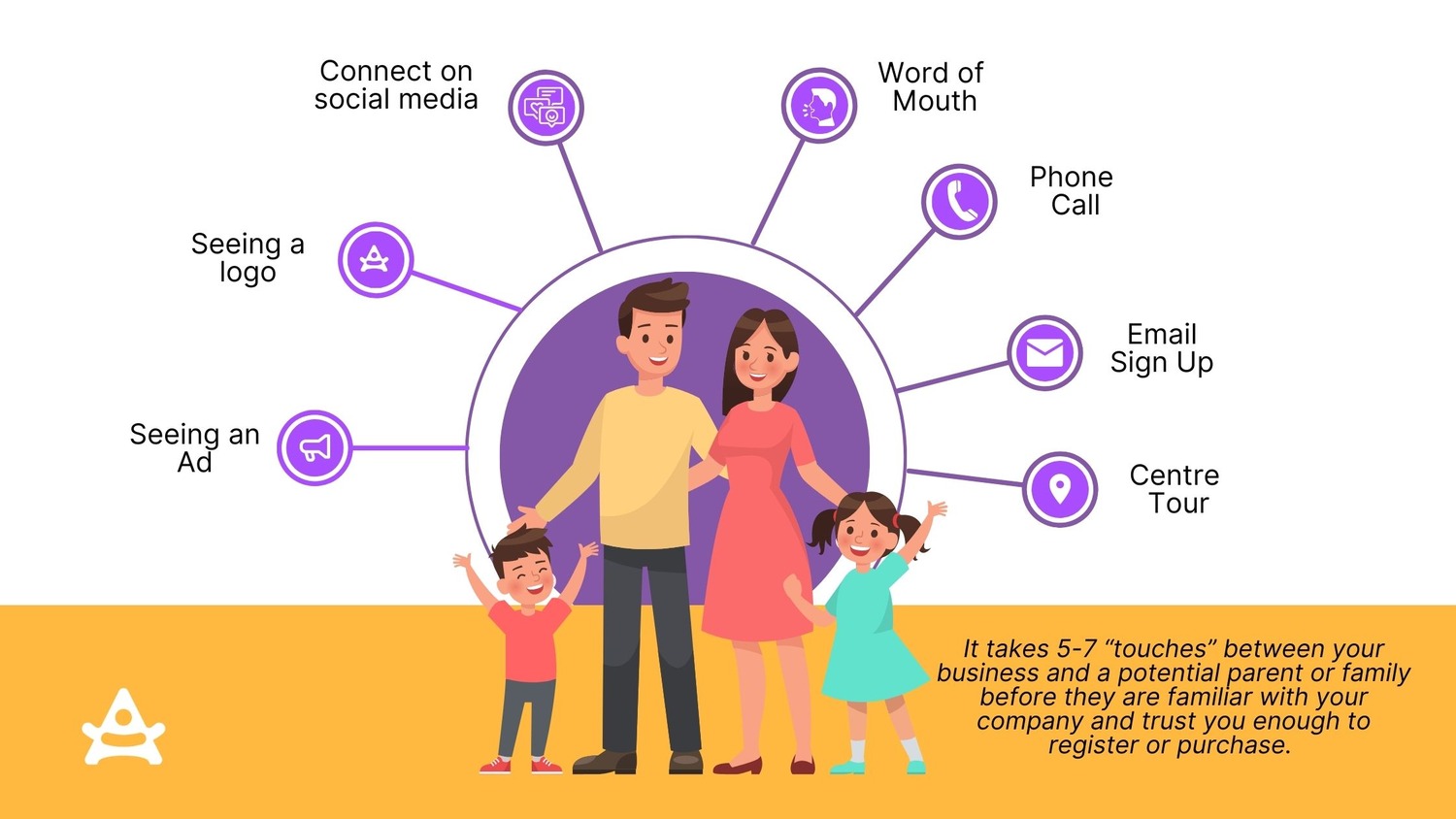
This also applies to parents who may not immediately enrol after their first tour but are willing to give your childcare centre a chance after receiving detailed information through a series of thoughtful email messages.
How to Build an Effective Email Marketing Strategy
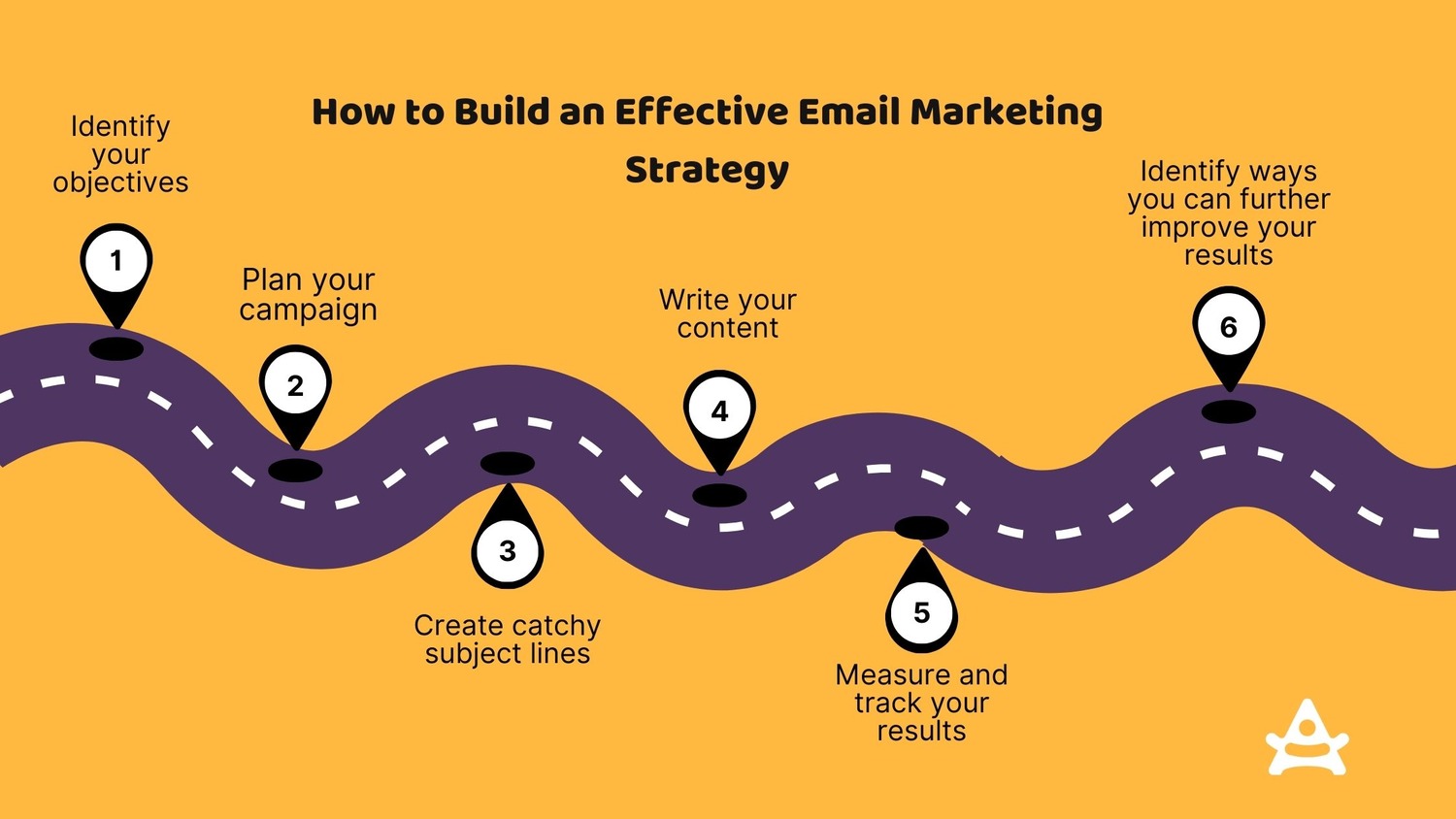
1. Identify Your Objectives
What is the Purpose of Your Email Marketing Campaign?
- Enrol more parents – You can use email marketing to give parents additional information about your centre and nudge them into enrolling their children with you.
- Information and communication – Give parents updates regarding what is happening in your childcare centre and what they should be aware of.
- Promotions – Are you currently holding any promotions for parents that they should be aware of? You can disseminate this information quickly and effectively through email.
- Reconnecting with lost families – Are there parents who were enrolled in the past that you’d like to reach out to and contact? If you have their email, you can send them a campaign urging them to give your centre another try.
What Email Campaigns Help Childcare Centres Accomplish
- Brand awareness – Build brand awareness by consistently sending out emails to parents who showed interest. This gives them further exposure to your brand and makes them more likely to trust you in the future.
- Website traffic – Get additional website traffic when you send email campaigns with links to your childcare centre’s website.
- Growing your centre – Sending emails that urge the recipient to enrol through a link in the email message can bring in additional revenue.
- Lead nurturing – Nurture relationships with interested parents and families by sending out emails providing them with information about your centre.
- Feedback and surveys – Gather information about how satisfied your families are with your childcare centre by sending emails containing feedback requests and survey forms.
Types of Email Campaigns for Childcare Businesses
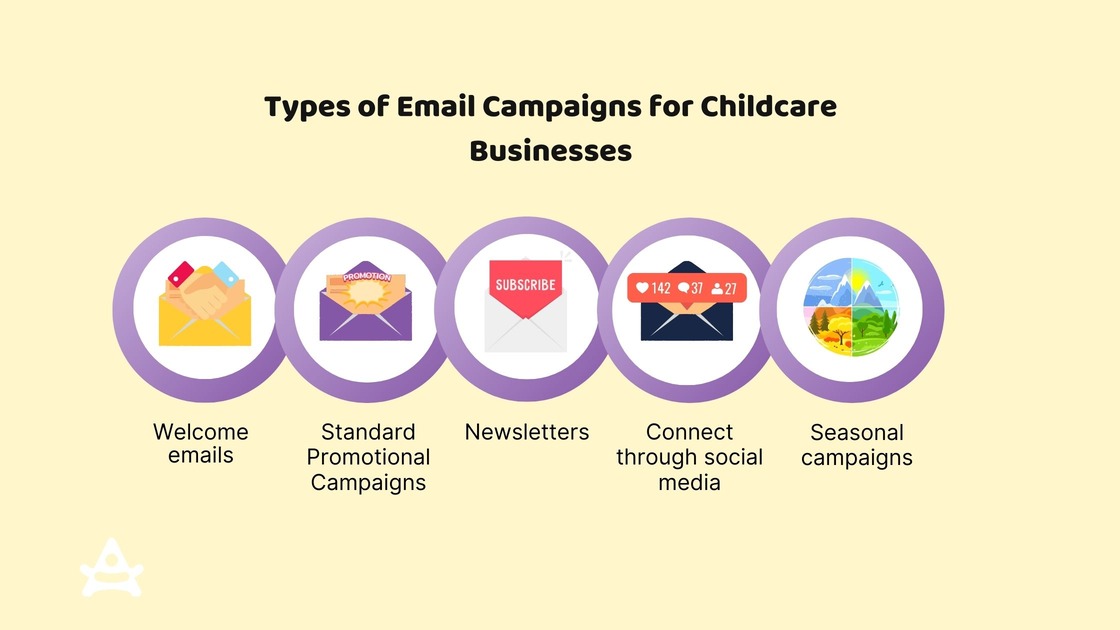
- Standard promotional campaigns – These are the types of campaigns you’ll most utilise. It involves sending additional information and detail to parents, making them more likely to enrol.
- Welcome emails – When someone signs up to your email list for the first time, send them a welcome message to make them feel more comfortable with your business.
- Seasonal campaigns – If you have seasonal enrollments, seasonal activities, or seasonal information, create a campaign that automatically activates on a specific date.
- Promote social media & Blogs – To grow your childcare centre’s social media presence, urge parents and families to follow you on social media.
- Newsletters – Keep families and parents informed through newsletter email campaigns.
2. Plan Your Email Campaign Strategy
Segmenting Your Email List
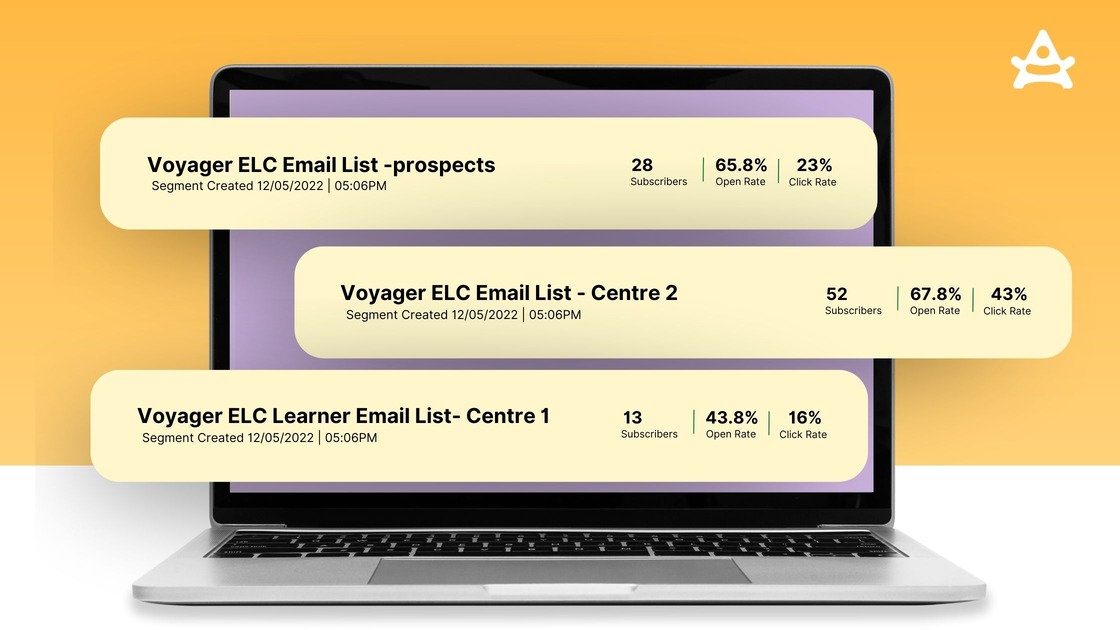
Plan Your Campaign Flows and Sequences
How Effective Campaigns Can Help Cross-Promote Content
3. Catchy Subject Lines & Improving Your Email Engagement Rates
The 7 Principles of Influence (plus one bonus)
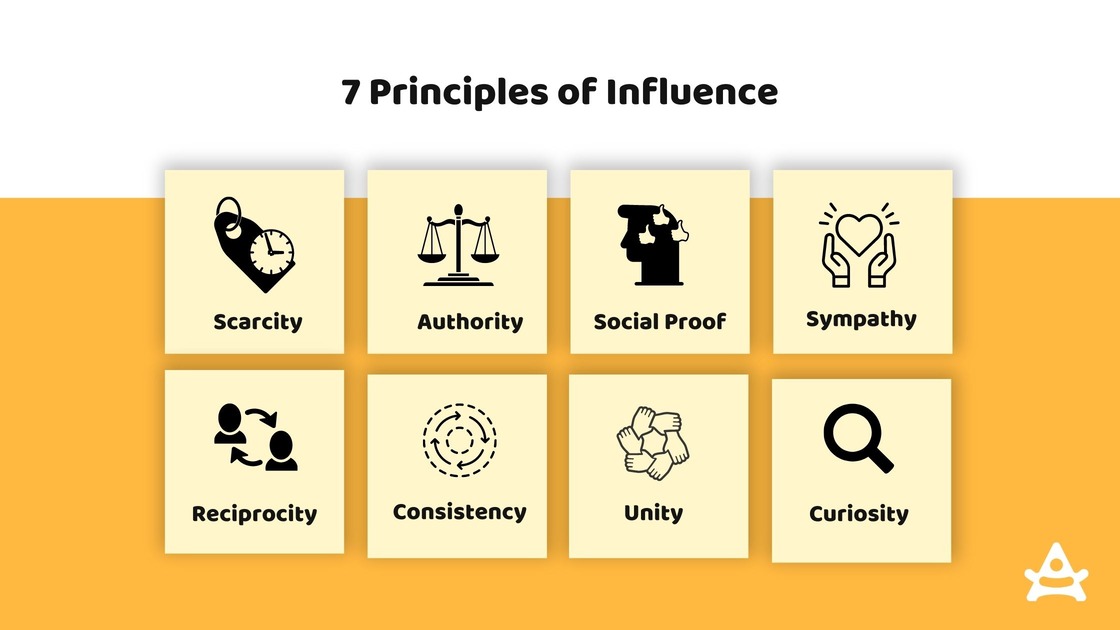
1. Scarcity / Urgency
- “🎉Filling fast: Your last chance to get a spot in our toddler room!”
- “First day of enrolment: LAST chance for a bonus!”
- 🚨 Early enrolment ends soon!
- “📧 [Your Centre] is almost full! Join the waitlist today!
- [NAME’s FINAL REMINDER] Our mums and bubs group only has 2 spots left
2. Authority
- 3 Mums tell us why they love our FREE mum and bubs playgroup
- From one parent to another: Advice on choosing the right childcare centre.
- 10 things you MUST know before selecting a childcare
- How Exceeding the National Quality Framework benefits your child
- Why that shiny new centre may not be the best choice for your child
3. Social Proof
- Experts
- Celebrities/Influencers
- Users
- The wisdom of the crowd
- Friends and family
- Certifications
- 📈 Our parent happiness score just hit a new high for the 3rd year in a row!
- “Join 80 happy families and enrol your child today.”
- “[Suburb’s]’s highest rated childcare centre is now enrolling.”
- Here’s how other parents are preparing their child for school.
- [Referral name] loves us & thought you might, too
4. Sympathy
- “Parents just like you have managed to use this method successfully.”
- “You’re an amazing parent if you do this.”
- Feeling [insert emotion]? Let me help
- If you’re struggling with [common pain point], you’re not alone
- [Toilet training]
- [Eating healthy]
- [Drop offs]
5. Reciprocity
- “Free mums and bubs group this Wednesday. Coffee and muffins on us!”
- “A parent’s checklist to raising successful children.”
- Find out how to get free childcare for your little one.
6. Consistency
- “X TIPS to encourage your child to share.”
- “Schedule a tour today before it’s too late!”
- “7 Steps to creating a healthy routine for your toddler”
7. Unity
- “1,500 parents who want the absolute best for their children have already downloaded this e-book.”
- You’re in the [Centre Name] family. Now let’s be friends.
8. Curiosity (Bonus motivator)
- “Your child’s first week of childcare – 7 tips to ensure success.”
- “We’ve just added new perks for members of our parent’s club”
- “Are you ready for 2023 [Insert year] yet?”
- “4 Lessons [Centre Director/Educator] Learned from caring for 1345 children over 10 years”
Tips for Designing Email Subject Lines
4. Know What Makes an Outstanding Email Message
Improve Your Message with Visual Appeal

Email Personalisation
Keep It Short & Succinct
Email Formatting
Use Calls to Action
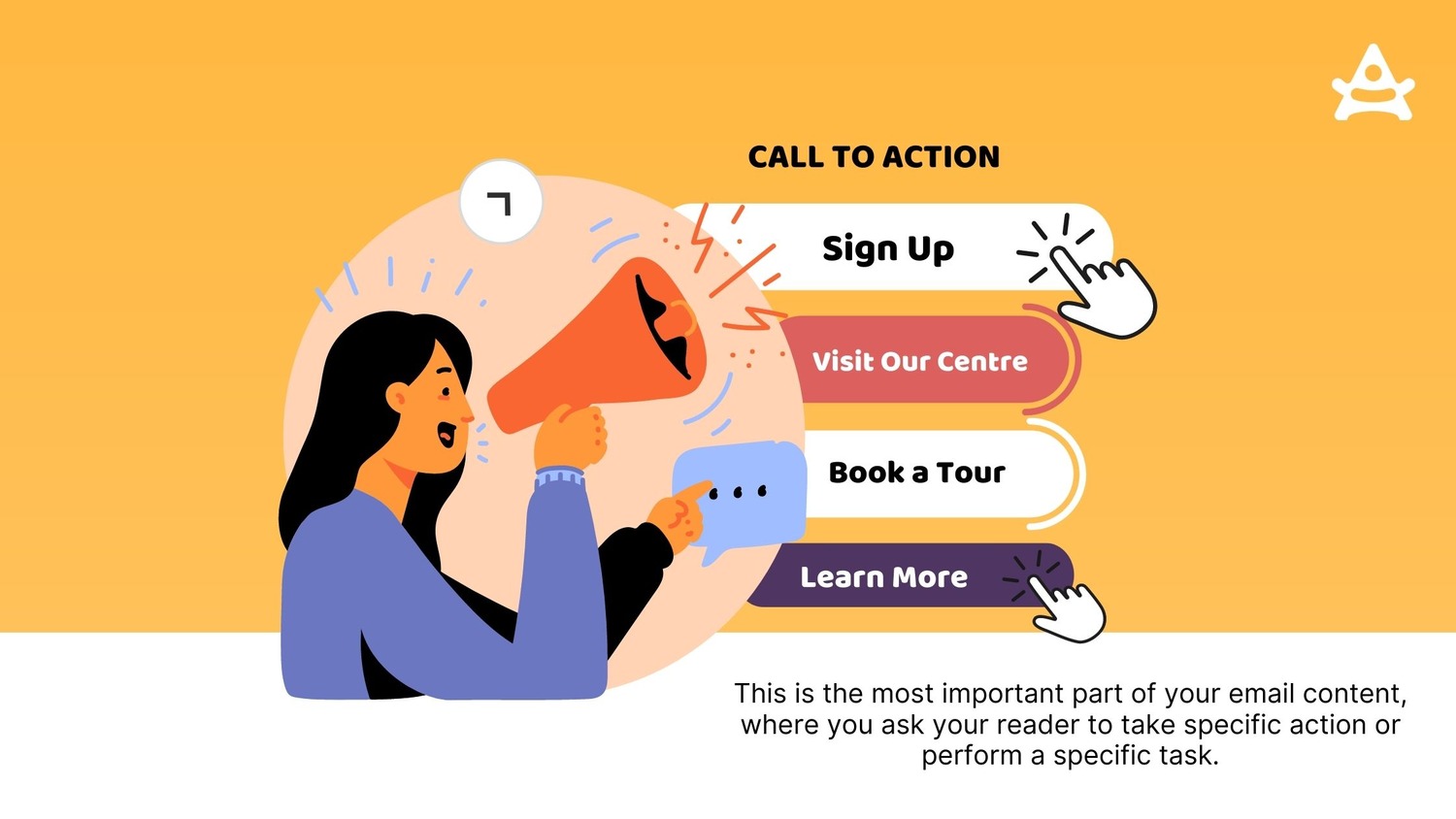
If you want to enrol more parents into your childcare centre, this is the perfect place to ask them to call your phone number or visit your centre to sign up their children.
Emotional Appeal
Emotions play a huge role in influencing behaviour, and therefore marketing. By appealing to emotions, you can motivate your readers to act. Some ways to achieve this include using humour, storytelling, and offering incentives
Incentives
Incentives are a great way to increase your chances of getting someone to take action. They work well when combined with emotional appeals, because they help to reinforce the message being delivered.
Call To Actions
A call to action is a clear request to take action on something. The goal of a call to action is to get your readers to click through to a specific page or link where they can complete a task.
You might have a great open rate, but if no one is taking action on your emails and clicking through to read more or take action then it may be a sign the content needs improving.
Length
The length of your emails also matters. If you write long emails, make sure that they contain value. Short emails tend to have higher open rates and conversion rates.
Video
Video is becoming increasingly popular as a form of communication. It has the ability to engage audiences in a much deeper way than text alone.
Freebie
Offering something for free or special offers is a great way to get attention and build brand recognition. People love getting things for free, so offering a freebie encourages them to subscribe to your newsletter.
5. Measure & Track Your Email Campaign’s Performance
When you don’t measure your progress, you don’t know what needs to be improved. With email campaigns, in particular, it is extremely important that all of your email statistics are tracked and monitored in order to ensure that your emails are effectively capturing the attention of parents and families.
We’re going to walk through several methods you can use to test the performance of your email campaign and make improvements on the go. This includes techniques such as A/B testing, monitoring open and reply rates, using reporting tools, and tracking unsubscribe rates.
A/B Testing
A/B testing is a methodology used by marketers all over the world to test one variable at a time and make adjustments and improvements to their campaigns.
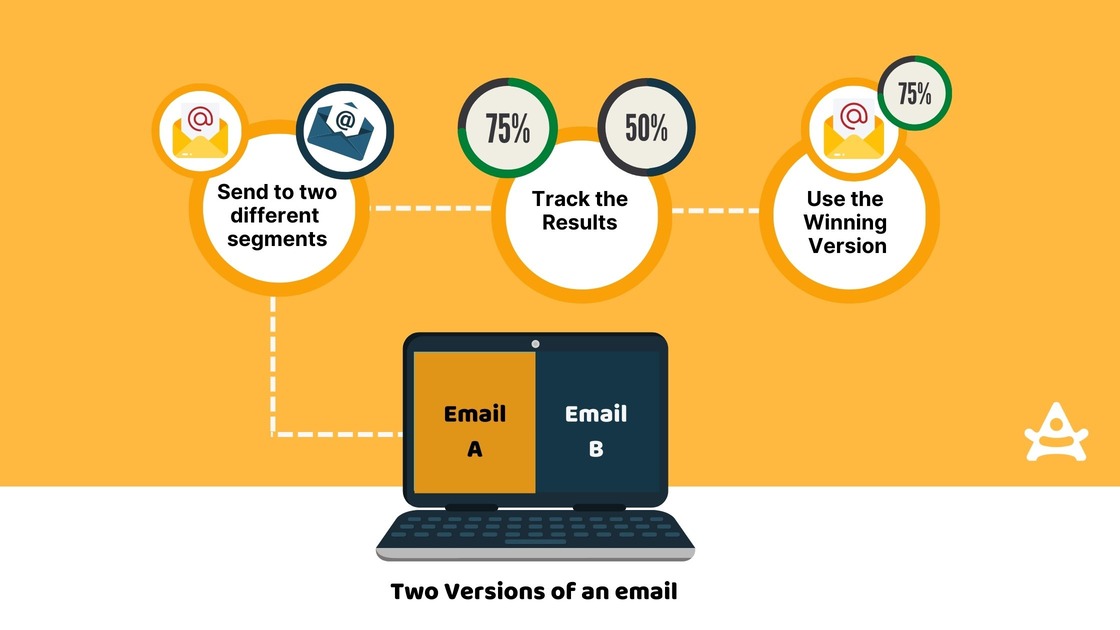
Reporting Tools
Open and Reply Rates
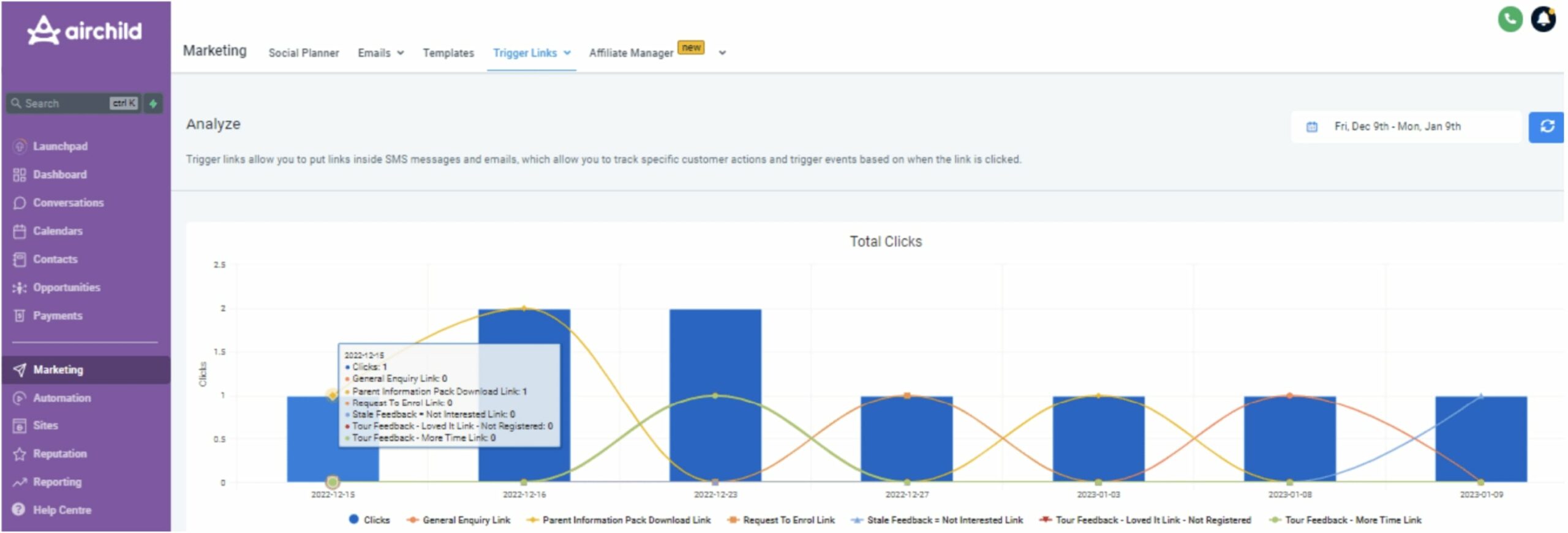
Your reply rates will help you gauge engagement and how invested your readers are in obtaining a solution to their problem straight away. If you get a large number of email replies, you’re dealing with a very interested and engaged audience.
Unsubscribe Rates
Tracking unsubscribe rates will allow you to understand how often people feel they don’t want to hear from your organisation anymore. Generally, unsubscribe rates should be very low single-digit percentages, and anything greater should prompt you to investigate and ask your readers what you’re doing wrong.
Use UTM Codes to Track Specific Actions
If you want to track specific actions within your emails in greater detail, you can use UTM codes. If you don’t know what UTM codes are, they stand for “urchin tracking module” and were developed by Urchin Software Corporation, which was acquired by Google in 2005.
They are bits of text that you add to a link that tell Google Analytics what campaign a specific individual came from. Most email software tools will let you include UTM tags in email links, making it easier to track information about clicks and conversions.
6. Considerations for Executing an Effective Email Marketing Campaign
You’ve learned a significant amount of information about successful email marketing campaigns at this point, but there are additional considerations that you should be aware of. We’re going to walk through each of these considerations briefly in the section below.
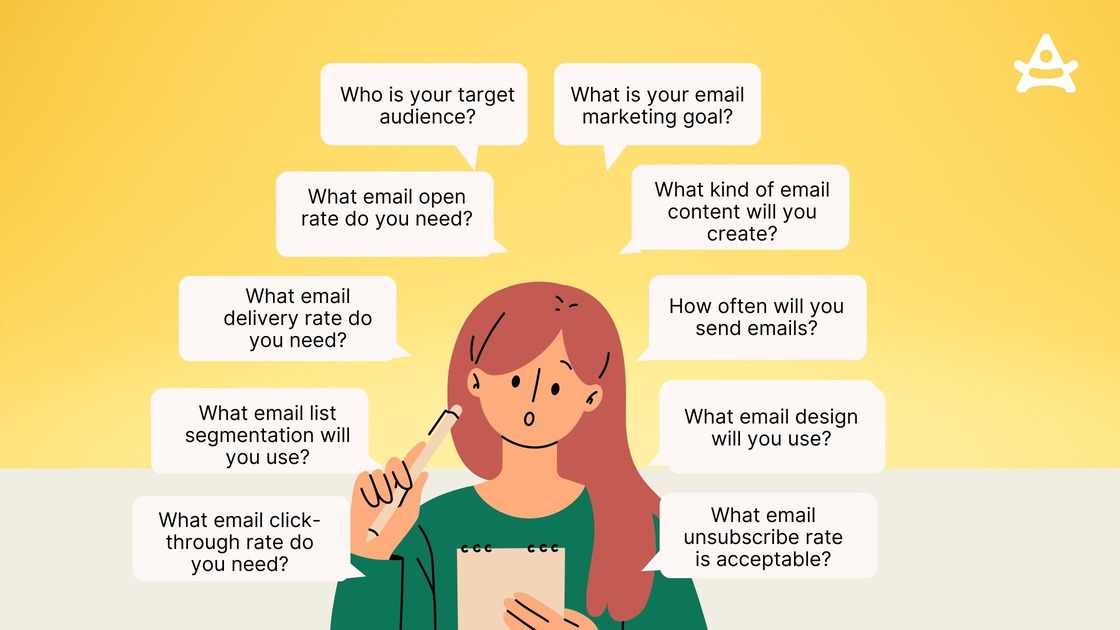
Who is your target audience?
You should know exactly who your target audience is. For your childcare centre, this is likely parents between certain ages in your locality or city.
What is your email marketing goal?
Identify what your email marketing goal is. Is it to enrol more parents, or to provide them with information about your centre? Thinking through your typical customer journey will help you highlight the various touchpoints and triggers that warrant an email.
What kind of email content will you create?
Will you be creating email content that tries to engage parents and build up trust in your organisation, or are you going to create highly visual content that shows parents exactly what your centre does day to day? Alternatively, do you need to create an email newsletter for your entire database?
How often will you send emails?
Determine how often you’ll send emails to those on your list. Will you be sending messages once every few days, once a week, or multiple times a month?
What email design will you use?
Find a template and email design that you’ll use, and stick to it. If you create a design and add branding colours and logos, your readers will trust your emails more and know it is directly coming from your organisation.
What email list segmentation will you use?
Determine how you will segment your list. Do you want to send different emails to parents of children who are in varying age groups? Do you want to create a segment for parents interested in extracurricular activities for their children?
What email delivery rate do you need?
The best way to determine email delivery rates is to look at industry standards. This is typically around 95% and higher.
What email open rate do you need?
Email open rates also vary based on industry. We recommend benchmarking your rate for your childcare centre and then comparing it to the industry standard, which is approximately 38.64%.
What email click-through rate do you need?
The average click-through rate for businesses in childcare services is 1.64%.
What email unsubscribe rate is acceptable?
An email unsubscribe rate that is nominal for an email campaign is one that is below 0.5%. Anything higher than this percentage indicates something is off in your campaign.
7. Choosing the Best Email Marketing Automation Software for your Daycare or Childcare Centre
We get it. We don’t want to add more onto your already piled high to do list. That’s why there are some great email marketing tools that do the hard work for you.
Choosing an email marketing automation software is perfect for helping you automate your campaigns. It can help you send more accurate and targeted emails, saving you time and improving engagement.
More Accurate Communications
With automated email campaigns, there’s less chance of errors or the reader misinterpreting something – those typos can really create some drama sometimes!
As a result, your communications will be more effective overall, both in terms of reach and impact.
Targeted Emails
Having an automated platform gets rid of the “hit and hope” mentality. Sending the same email to everyone can be detrimental to your database as receiving unwanted emails leaves you wide open for the spam folder. People will opt out of your newsletters and communication and it could tarnish your brand.
Email marketing automation allows you to target specific segments of your audience with highly relevant content. This makes it easier for you to reach those who are most likely to convert based on their behaviours, such as RSVP’ing to an event, or requesting a centre tour.
Time Savings
It goes without saying that automating your email campaigns can save you time by allowing you to automatically schedule and send emails based on certain parameters, such as date range, recipient list, or subject matter.
In a fast pace early childhood environment, sending emails may be low down on your priority list, so automated emails are a win all round!
Increased Engagement
No one wants to receive a boring email. How often has that happened to you? And what do you do? Click the unsubscribe button and never have to deal with them again.
But what happens when the content is interesting? You might read it there and then and respond, or you may forward it to a friend or partner who is likely to also find it compelling.
Email automation can help you send more engaging emails to your subscribers. This will increase the chances that they’ll open and read your messages, which in turn leads to increased conversion rates and customer retention.
There are plenty of email marketing platforms out there, all with varying features. You will also find email marketing services who will provide you with a range of communication channels and digital marketing strategies.
There will be pros and cons for each one, but ultimately you should use following list to help you make your decision.
Consider:
1. How easy is it to use? Can you create and send branded emails, manage your newsletter subscribers, and track results?
2. What templates are available for you to use? How many do you have access to and how customisable are they? Can you include your branding and colours?
3. Does it have email automation features? Can you send follow-up emails automatically or set emails to send based upon triggers like subscriber behaviour or within a particular time frame?
4. What sort of reporting tools does it offer? What kind of data is available and is it useful to you? Will it tell you about clickthrough rates and bounce rates? Is it easy to interpret?
5. What kind of customer support is available if you need help using the platform of have troubleshooting issues?
6. How much does the email marketing automation software cost to use? Are there different prices for different features or tiers of service? Does it depend on number of subscribers or the type of content you are producing?
7. What are the main features you need? Does the platform provide this easily and at little cost, or are there limitations? Not all CCMS solutions have a database and email capacity built in, meaning you need to use a third party software which usually attract fees.
Similarly, synchronising your existing database and CCMS with a new system is not always straight forward and many fall short of a rich email marketing integration.
8. A Proven Email Marketing Template You Can Utilise Today
We’ve walked you through the process of creating an email marketing campaign from start to finish for your childcare centre, and you should understand the process like the back of your hand!
The next step is to begin implementing these steps and begin sending emails to interested parents and families in order to increase enrolments.
If you’re interested in a free download that will jump-start this process for you, review this guide from Airchild on how to win more families from your centre’s tours.
